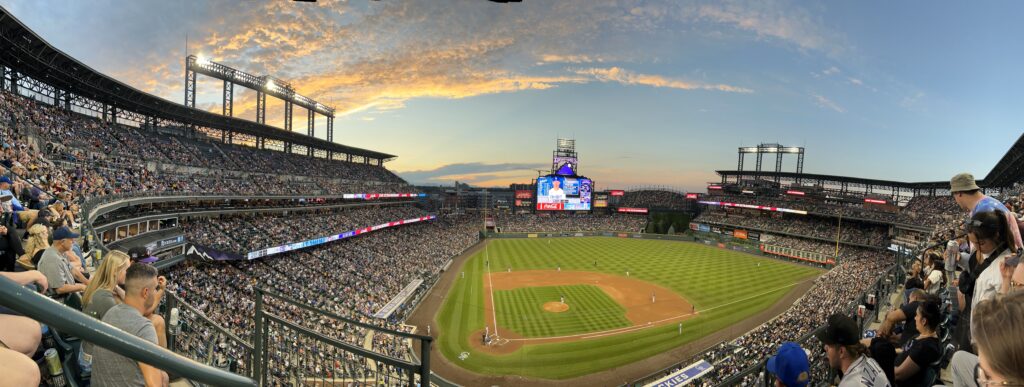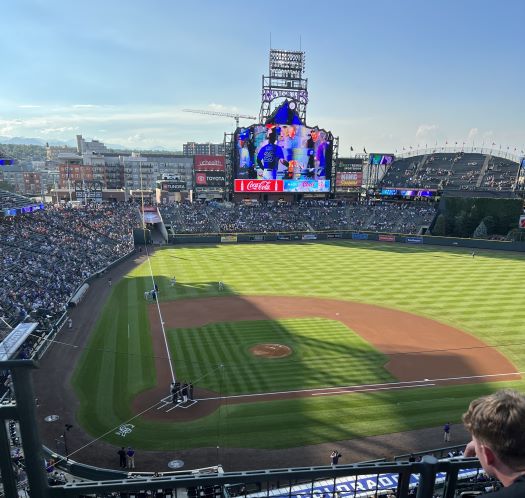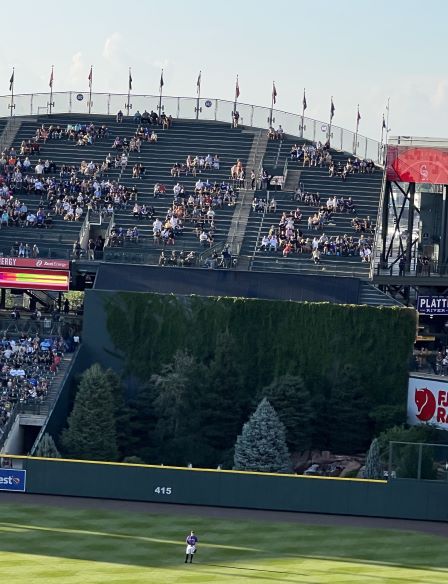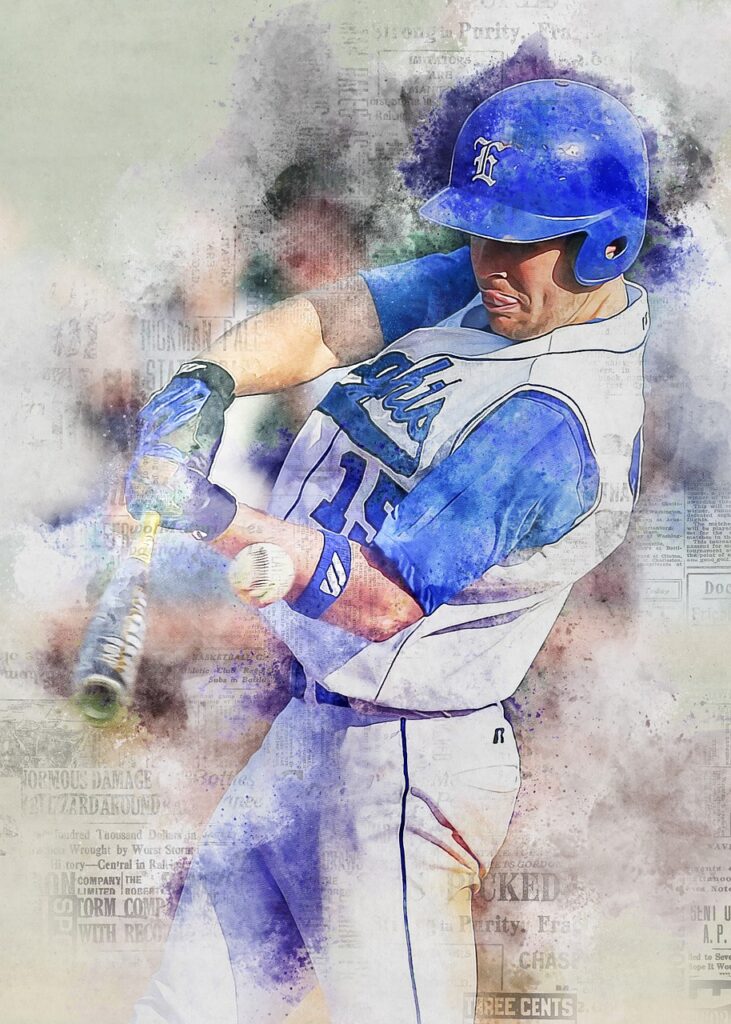It was the great Ernie Banks, aka Mr. Cub, who famously said “Let’s play two”. Of course, he was talking about double headers, a feature of Major League Baseball that, at least until this year, has mostly disappeared. That is how much he loved the game. I am sure he would have joyfully played in that rarest of animals, the triple header. There have only been three triple headers in the history of baseball. The most recent occurred in 1920 between the Cincinnati Reds and the Pittsburgh Pirates. Today, triple headers are banned by the current collective bargaining agreement. But, back in Ernie’s day baseball players didn’t make a lot of money anyway, and he almost certainly would have eagerly played for free for the love of the game. As a kid, he probably played ball all day until it was too dark to play and had to be ordered into the house.

These days the doubleheader is almost as rare as the triple header. They are mostly played to make up a game that was postponed, usually due to inclement weather. Back in Ernie’s day, it was not uncommon for Major League Baseball to schedule doubleheaders. This was mostly due to problems with travel. Until the 1950s teams traveled between games via train or bus. Mondays and Thursdays were traditional travel days. A team would play a three-game weekend series, say in New York, then take the train to Chicago on Monday for a three-game midweek series. Sometimes it would be a short hop between games. For instance, maybe the Yankees were playing in New York on Sunday and had to be in Boston on Monday. Sunday games were usually played in the afternoon, especially before they had lights for night games. So, it was a short train ride to Boston on Sunday evening after the game. Then, on Thursday, the team would take the much longer train trip to Chicago. The bottom line was, there were a lot more days off for travel and teams routinely scheduled doubleheaders to make up for those travel days. With the introduction of air travel, especially after 1958 when baseball expanded to the West Coast, a team could play a day game in Los Angeles on Sunday and fly to New York in time for a Monday night game. In 1943 the Chicago White Sox set the Major League record, playing 44 doubleheaders that season. That’s 88 games! More than half the season was double headers. These days, teams, especially those located in drier climates, may go years without playing a doubleheader. At least not in their home park. This season has been an anomaly with more doubleheaders scheduled than usual. This this was because about a weeks’ worth of games were missed due to the lock out at the start of the season. To get in a full 162 game season, baseball scheduled a number of doubleheaders as makeup games, rather than extend the season another week. And, of course, there were the usual games that were rained out adding to the number of double headers.
Generally, there are two types of doubleheaders. There is the day/night doubleheader and the twi-night doubleheader. In the day/night doubleheader, the first game is played in the afternoon and fans buy a ticket for the game. After that game is over, the stadium is cleared as there are a few hours before the second game starts. Fans wishing to attend the second game then have to purchase a separate ticket for that game. In the twi-night doubleheader the first game is played later in the afternoon, with about a 30-minute intermission between games. In that case fans can buy one ticket and attend both games. Baseball may bemoan the fact that they are losing money on the second game, but there is a 30 or 40 minute lull between games in which fans have nothing better to do than spend money at the concessions. Even so, this type of doubleheader is increasingly rare as owners try to maximize their revenue.
Anyway, that’s just a little history on the evolution, or perhaps the de-evolution, of the doubleheader. One time I attended a game that went 18 innings, staying to the very end because, well, you don’t leave a baseball game early, especially in extras. I suppose that game can count as a doubleheader. I did do an unusual doubleheader about 15 or 20 years ago. I saw the Dodgers play at Dodger Stadium in a rare Saturday afternoon game, after which, I took the 20 or 30 minute drive down the freeway to see the Angels play at Anaheim stadium. It was two games, four different teams, in two different stadiums. And I had to buy tickets for both games. But, for a baseball junkie, it was pure Heaven. That was part of a much larger baseball orgy. On Friday I went to San Diego to see the Padres play at Qualcomm stadium. That was followed by the Saturday afternoon doubleheader. On Sunday I flew up to San Francisco and took the BART across the Bay to see Oakland play a Sunday afternoon home game. Then, on Monday night, I saw the Giants play at AT&T, now Oracle Park. That’s five baseball games at all five California stadiums in about 76 hours. And I’m going to repeat that stunt at the end of the current season. No doubleheaders (boo-hoo) but I’ll be in San Diego on Thursday, Los Angeles on Friday, Anaheim on Saturday, San Francisco on Sunday, and Oakland on Monday.

So, going back to the original premise of Let’s Play Two. It wasn’t really a doubleheader but, if you read my blog last week, you know I was in Chicago for a Tuesday afternoon game between the Cubs and the Pirates. After the game, the wife and I then flew to Colorado Springs. On Friday I drove to Denver with my buddy Lucas to watch the Rockies play the Dodgers at Coors Field. By the way, for those original five games, my wife only attended the Bay Area games (she really didn’t have a choice). She’s not as obsessed as I am and I couldn’t get her go to the three games in SoCal, so I went with friends instead. Which is also why I saw the game at Coors with Lucas and not the wife.
Coors Field is another gorgeous ballpark. Really, is there such a thing as an ugly baseball park? Well, I’ll talk about the Oakland Coliseum later. Coors was built with ease of access in mind, located right off Interstate 25 in downtown Denver and not far from Union Station. I suppose if you live in Denver and know the area it’s easy enough to get to the stadium. If you are like me, and don’t know the area, parking can be a bit of a challenge. Some of the signage tends to be a little misleading and I missed my exit the first time around, having to circle the entire ballpark and make a second approach. The second time around, the sign indicated the stadium was to the right, which it was, but parking was to the left. I went to the right and found the stadium but no parking. I had to circle around a second time, this time turning left. And from there it was a long drive to a parking spot. Coors Field kept getting smaller and smaller as we drove further and further away. Once parked, though, they have a regular shuttle that takes you right to the front door, so it wasn’t as bad as all that.


The Rockies began life as a Major League ballclub in 1993, playing at Mile High Stadium a football venue, for the first two years while Coors Field was being built. That first season at Mile High they drew 4.5 million fans, a Major League record. Right off the bat, if you’ll pardon the pun, Coors was redesigned, adding an additional 11,000 seats, thus bringing the seating capacity up to 55,144. All this for $300 million. Compare that to the cost of building Wrigley Field some 80 years earlier, in 1914, for $250,000.
Coors Field has the highest elevation of any ballpark in the major leagues by a long shot. Because of the high elevation and the thinner air, it has the reputation of being home run friendly. It is probably deserving of that reputation but not for the reasons everyone initially thought, the thin air at high altitude. The theory being that with air that thin there will be less friction on the ball, and it would obviously travel further. This was anticipated even before the Rockies were officially a Major League team. To offset this phenomenon, Coors was designed with the largest outfield in the Major Leagues. But that ended up making things worse. The average number of home runs hit at most ballparks tends to be a little under 200 each season. That averages out to a little more than two home runs per game. In 1999, the Major League record for home runs in one stadium in one season was set at Coors with 303 taters, an average of almost four home runs a game. Not only that but, due to the expansive outfield, Coors usually leads the league in doubles and triples as well. Thus, a very hitter friendly ballpark. Studies were done and it was determined that it wasn’t so much the thin air that caused the ball to carry further, as much as it was the dry air. Balls closer to sea level tend to be, for lack of a better term, soggy. They absorb more moisture and thus are denser and more difficult to drive. The air in Denver is so dry the balls tend to be less dense, re lighter, and have a nasty habit of just flying off the bats. In 2002 Major League Baseball decided to allow the Rockies to install a large, room sized, humidor at the ballpark where they store the balls until game time. This causes the balls to be damp and softer, similar to the balls at other stadiums. Since then, the number of home runs hit at Coors has steadily declined until now it is below 200 and roughly equivalent to the home run totals of other ballparks. And, while the issue of dry air seems to have been solved, there is still the issue of the thin air. The theorists were correct in realizing that, with thinner air, there would be less friction on the ball and, while that may not have translated to more home runs, per se, it does affect pitching. Again, with less friction on the ball, it travels straighter. There is less bend on the curveball, less sink on the sinker, less change on the change up and less knuckle on the knuckleball. Coors Field is the kind of ballpark where great pitchers go to be mediocre pitchers and mediocre pitchers go before they head off to Japan. Although there was that Japanese fellow (and Nomo was his name-o) who pitched the only no-hitter in the history of Coors Field.

What all this translates to is, we were going to have a fun time at Coors Field that Friday night. It was especially cool because they were playing my Dodgers. The Dodgers won the game 5 – 4, but that was pretty much expected. Seems the Dodgers are always winning these days.
I’ll rate Coors just as I did Wrigley on a scale of 1-10, 10 being best:
Location: 8! Coors Field is centrally located near downtown Denver. When construction was originally proposed, the location was a prime selling point. Ownership wanted the stadium to be easily accessible from anywhere in the city. Being very close to Union Station, which could provide rail service in and out of the area, was important as well. This has been the trend in modern sporting venues for the last 30 years or so and Coors was built right at the beginning of that shift. Prior to this new construction boom, most stadiums focused on the suburbs and the outskirts of the big cities. The downtown areas of many major cities in America were dying. They were ghost towns, inhabited mostly by vagrants, drug addicts, and the homeless. Then urban planners began to study ways to bring people back into the core downtown, developing these areas for mixed-use by adding high-rise apartments, shopping districts, and entertainment venues. San Diego’s Gaslamp district located on 5th street is a prime example. The area had been destitute. Then in the 80s the city started to add restaurants, many featuring live bands, they built up the Convention Center, Petco Park was built within walking distance. The gas lamp, downtown San Diego, became a destination. Not only a place to go, but a place to live and work.
Accessibility: 5! Did I mention the trouble I had getting to the stadium and finding parking? To be fair, I had never been to Denver before so I’m not familiar with the area. Somehow, I was doing the driving, Lucas acting as navigator. I think he failed cartography in school. Traffic into and out of the area wasn’t horrendous. At least not until I got onto the surface streets and was circling the stadium making my final approach as I looked for parking. As much as I love the Dodgers, getting in and out of Dodger Stadium is a nightmare these days. Of course, the Dodgers lead the league in attendance year in and year out. Until the Rockies start putting a better product on the field, I doubt they’re going to be bringing in 4 million fans a season. Smaller crowds equals less traffic equals easier to get in and out of.
Fans: 8! If Cubs fans rate a 10, then Colorado fans are probably worth an 8. I suppose most baseball fans in any given city are going to be at least a 6. Well, unless they live in Philadelphia. If I were to base this ranking strictly on attendance figures, even with crappy teams and a smaller stadium, the Cubs always manage to be in the top four or five of the 15 National League teams in attendance. Meanwhile, the Rockies ranked first in attendance for their first seven seasons, drawing more than 3 million fans each year. Since then, they have drawn over 3 million fans just once, and that was just barely. That was in 2018 which also happens to be the last time they made the playoffs. Typically, they rank about middle of the pack or lower in attendance, even though Coors Field seats 14,000 or about 30% more fans than Wrigley. In other words, a lot of the Rockies fans only jump on the bandwagon when the team is winning. This is probably true of most teams, the Cubs being the exception, which is why they rated a 10. The size of the stadium is probably part of the problem. My experience with Wrigley was that it seems small and intimate, and the fans can get up close and personal with the players. Coors Field is vast, and the players seem distant.
Staff: 8! The staff here pretty much mirrored my experience at Wrigley Field. As I said in my last blog, they probably have special training on how to interact with fans and provide the best game experience. And, it may not be Wrigley Field, but you get to work in a baseball stadium and watch the game for free. Actually, you’re getting paid to watch the game. As a fan, it doesn’t get much better than that. And if you are not a fan, why would you even work there?
Ambiance: 7! It was an evening game on a Friday night. Game time temperature was about 80 degrees. The view of downtown Denver under a darkening sky was spellbinding. Everyone there was getting a jump on the weekend, out to have a good time while enjoying America’s favorite pastime so they were obviously in a good mood. It’s funny/ironic that the most memorable interaction I had was with a Cubs fan. There also appeared to be a good number of Dodger fans at the game as well. But hey, we were at a baseball game having a great time eating stadium food while the Dodgers won 5-4 in a game that ended on Trace Thompson’s great catch in foul territory on a full count with the winning run on base. It doesn’t get much better than that.
Concessions: 8! The dogs were good, and the beer was cheap. What more can I say. Coors Brewing Company has naming rights for a reason. I’ll use the same scale I used at Wrigley, the cost of attending a Rockies game for a family of four. The Rockies are the 4th least expensive team in baseball for a family of four to attend. That’s tickets, parking, four hotdogs, two beers, and two sodas for the little ones all for a cost of only $154.92, less than half the cost of going to a Cubs game.
That’s two off my bucket list. Perhaps next year I’ll go to a White Sox game and a Cardinals game. Of course, since I’ll be in Chicago, I’ll have to go back to Wrigley. That is all for this week folks. I would like to say one thing before I leave you. I have been writing this blog a little over a year. In fact, this was my 59th blog entry. I enjoy writing these and I hope you have enjoyed reading them. I’d like to think I have gotten better at it as time goes on. For those that know me or have been following me, you know that I work as a machinist in the oil industry. Right now we are extremely busy and I have been working 60 to 65 hours a week for the past few months, and it looks like I will continue to be putting in those hours for the rest of the year. Working those hours and trying to find time to write this blog are a real challenge.
So, I’ve decided to take a little time off between now and the end of the year. Part of it is also because I want to work on updating the website. I will still post from time to time so keep looking for me. It’s just that, between the demands of my job, my home life, and trying find time to write 2,000 to 4,000 words each week are a little more than I want to handle right now. I was swinging for the fences, and I think I got a solid double.
